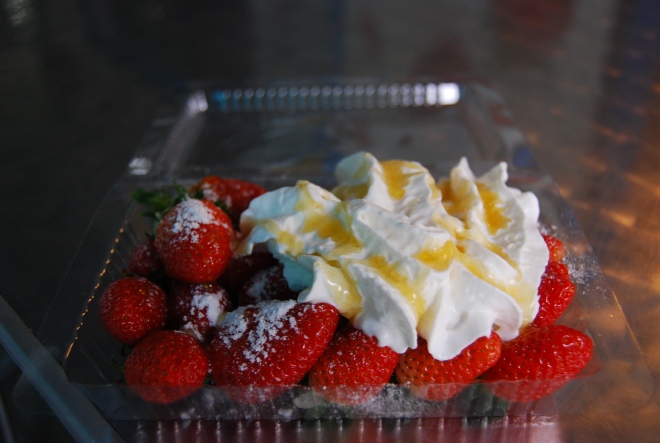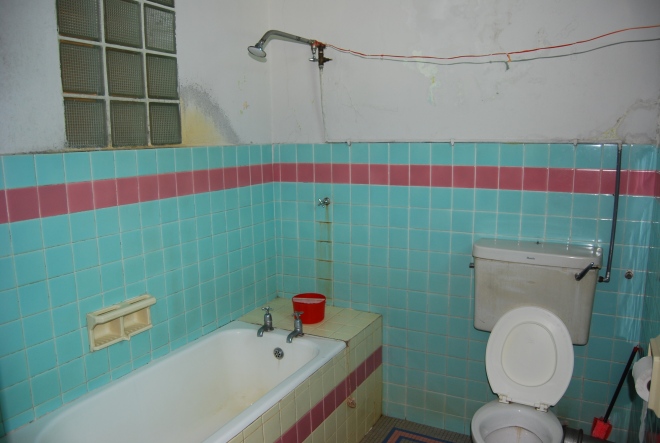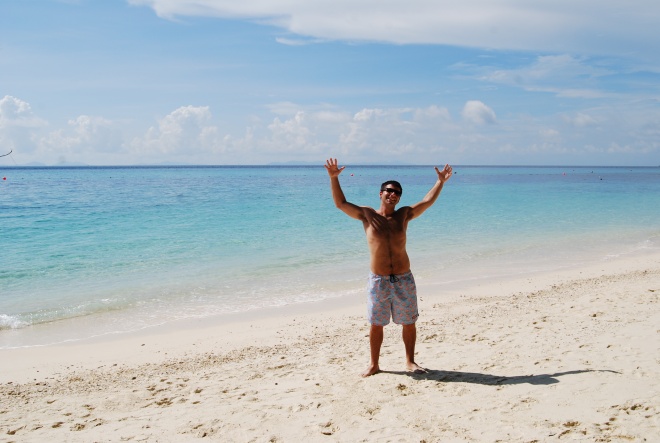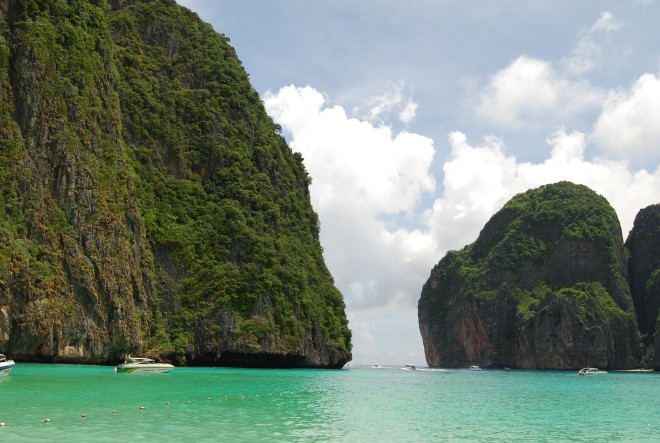Day 61
Kuala Lumpur, Malaysia
Based on our previous two bus trips, we awoke this morning with a fair amount of trepidation. When we arrived at the terminal, however, we learned that our leader (perhaps sensing an imminent mutiny among the group) had bought us tickets aboard a “Super VIP” coach for our 4-hour ride to Kuala Lumpur. This meant that although the bus wasn’t any newer, it did have air conditioning and reclining seats, both welcomed at 8 o’clock in the morning. Indeed, life was good behind the exclusive velvet rope, until an emergency exit door in the back swung open, leaving one of our travel companions sitting precariously close to the edge. Guess you can’t have it all on Malaysian buses — that is, both comfort and safety.
After checking into our rooms at the Mayview Glory Hotel — a relatively clean but loud joint about 500-feet from a frequently passing subway that shakes our windows — we hopped into a cab for an orientation of KL. Our first stop with the National Mosque (Marjid Negara), a boxy, almost utilitarian structure built just over 100 years ago. The main dome is an 18-pointed star, one for each of the 13 Malaysian states and five for the Pillars of Islam.
We walked up one of the busy 6-lane thoroughfares that run through this capital city, stopping along the way for a quick workout at one of the many public exercise parks.
Our destination was Dataran Merdeka, or Independence Square, an historic location from which the Union Jack was lowered on August 31, 1957, marking the end of British colonial rule here. Today, there are fountains, flags and fields, as well as an architectural juxtaposition between old and new.
Rain came next and we found shelter in Central Market, a building filled with stalls selling more carvings, paintings, pottery and glassware than we even knew existed. After some aggressive bargaining, we walked away from buying some handcrafts, anticipating that once we left the store, we would be called back and the deal closed. This never happened, so we continued empty-handed and later were thankful.
Jalan Petaling is the main drag in Chinatown specializing in knock-off everything. Unlike in Shanghai in which vendors can’t sell these goods out in the open, here in Kuala Lumpur, anything goes. A Breitling watch bought by my roommate for 25 ringgit ($8USD) lasted about 6 hours before it stopped ticking — although it’s now working again and we’d classify its status as “temperamental.”
Drenched in sweat from having misjudged its distance from us, we arrived at the KL Tower, the fourth tallest communication tower in the world (at 421-meters), perched atop Bukit Nanas. Number three is the Shanghai Pearl. While wild monkeys played on the first level, it was the observation deck views from 276-meters, including that of the landmark Petronas Twin Towers, that stole the show.
We got back, showered and then headed back to an illuminated Petronas for a delicious (and Western) dinner — avocado salad, spaghetti with king prawns — at a trendy restaurant called The Apartment and then a couple of drinks at the scenic Sky Bar, on the top floor of the nearby Traders Hotel.










































